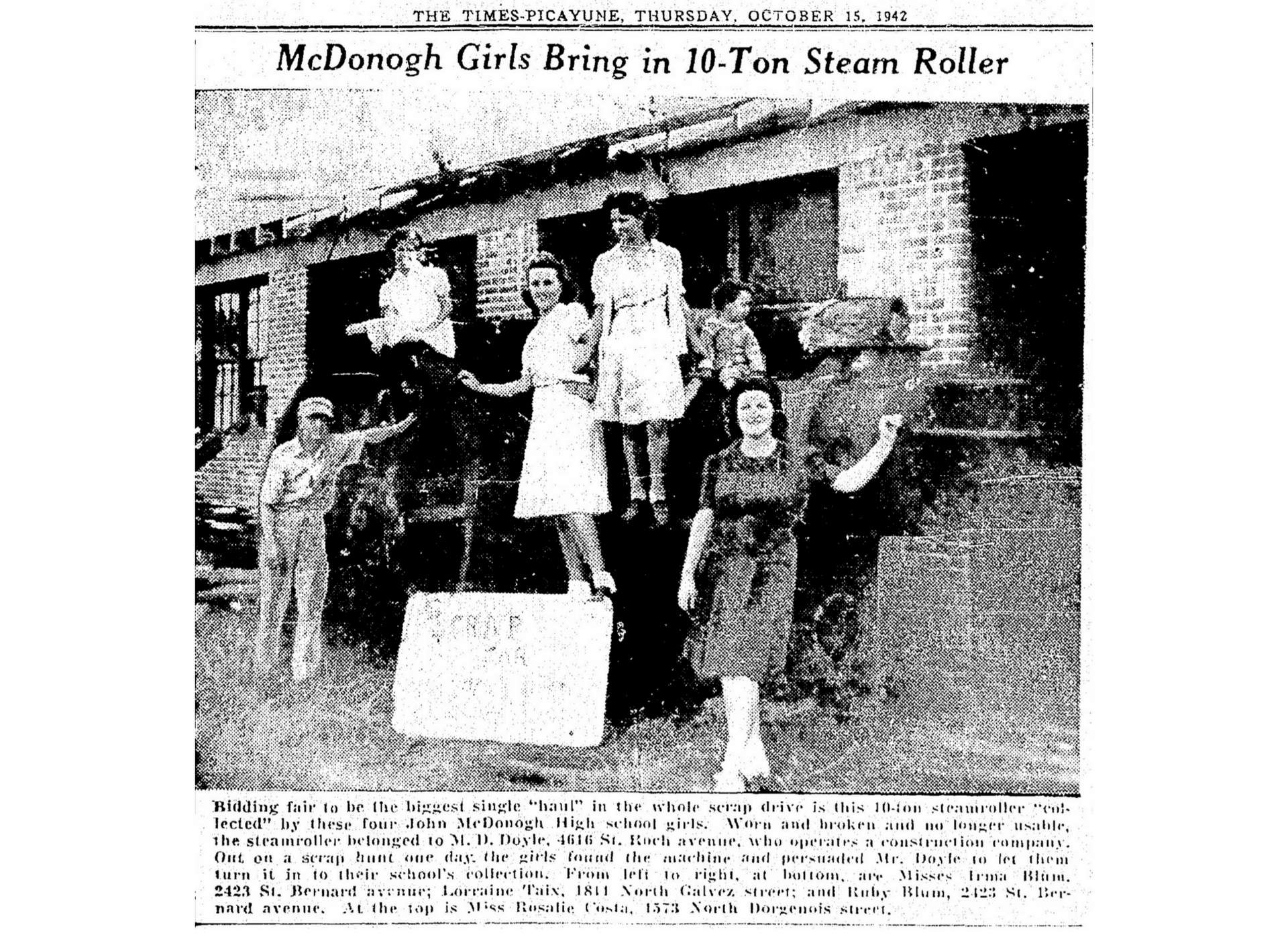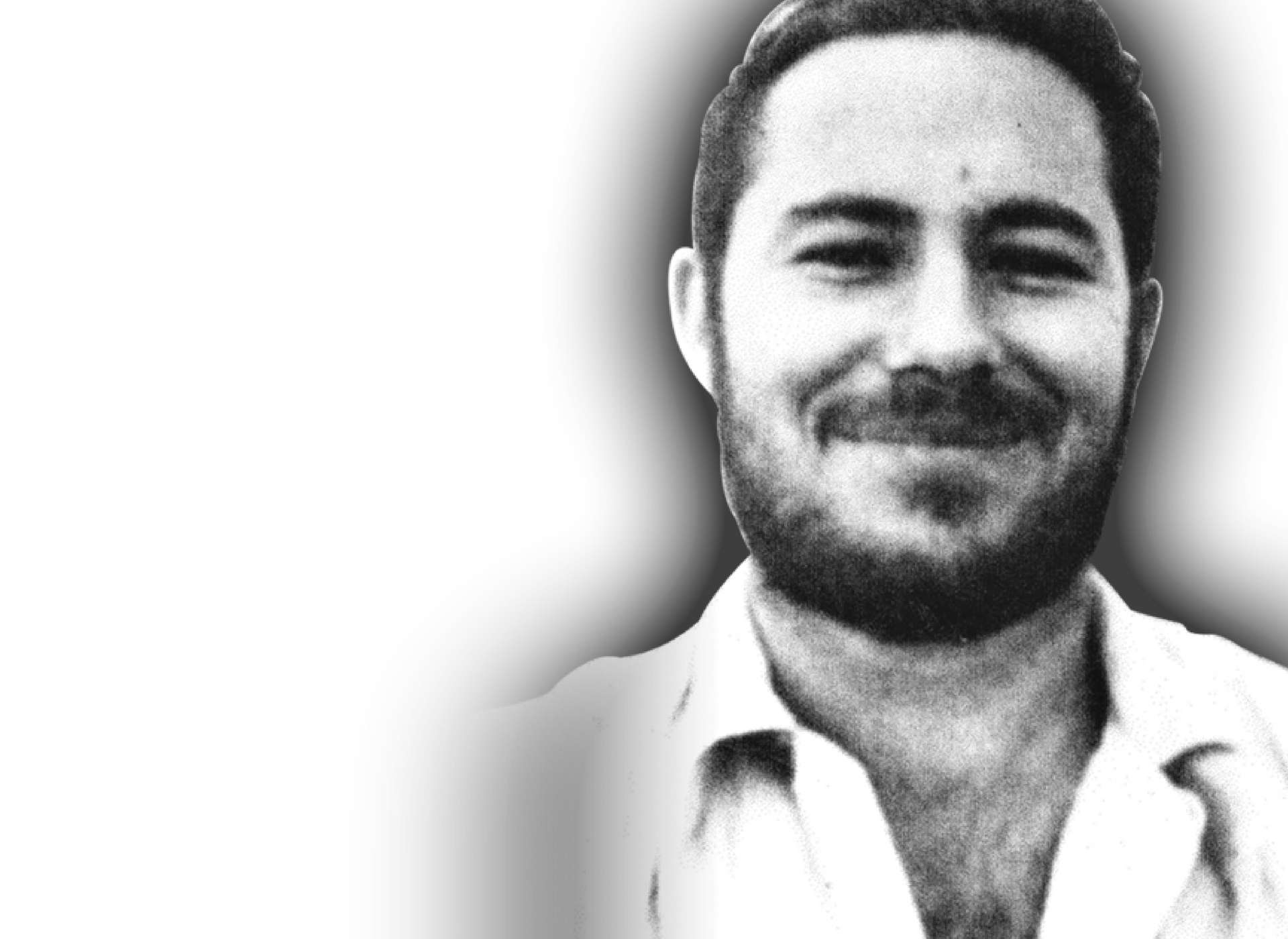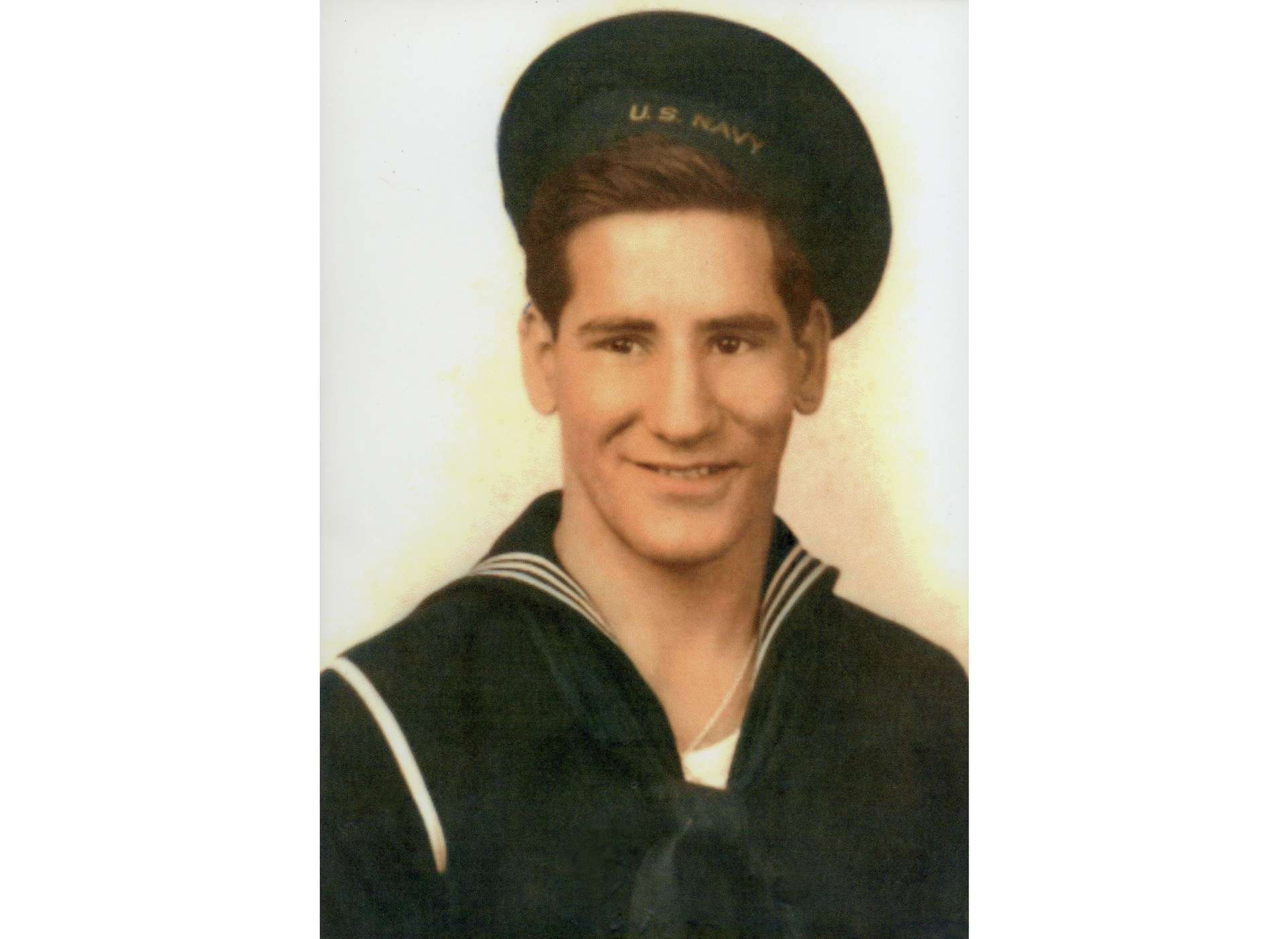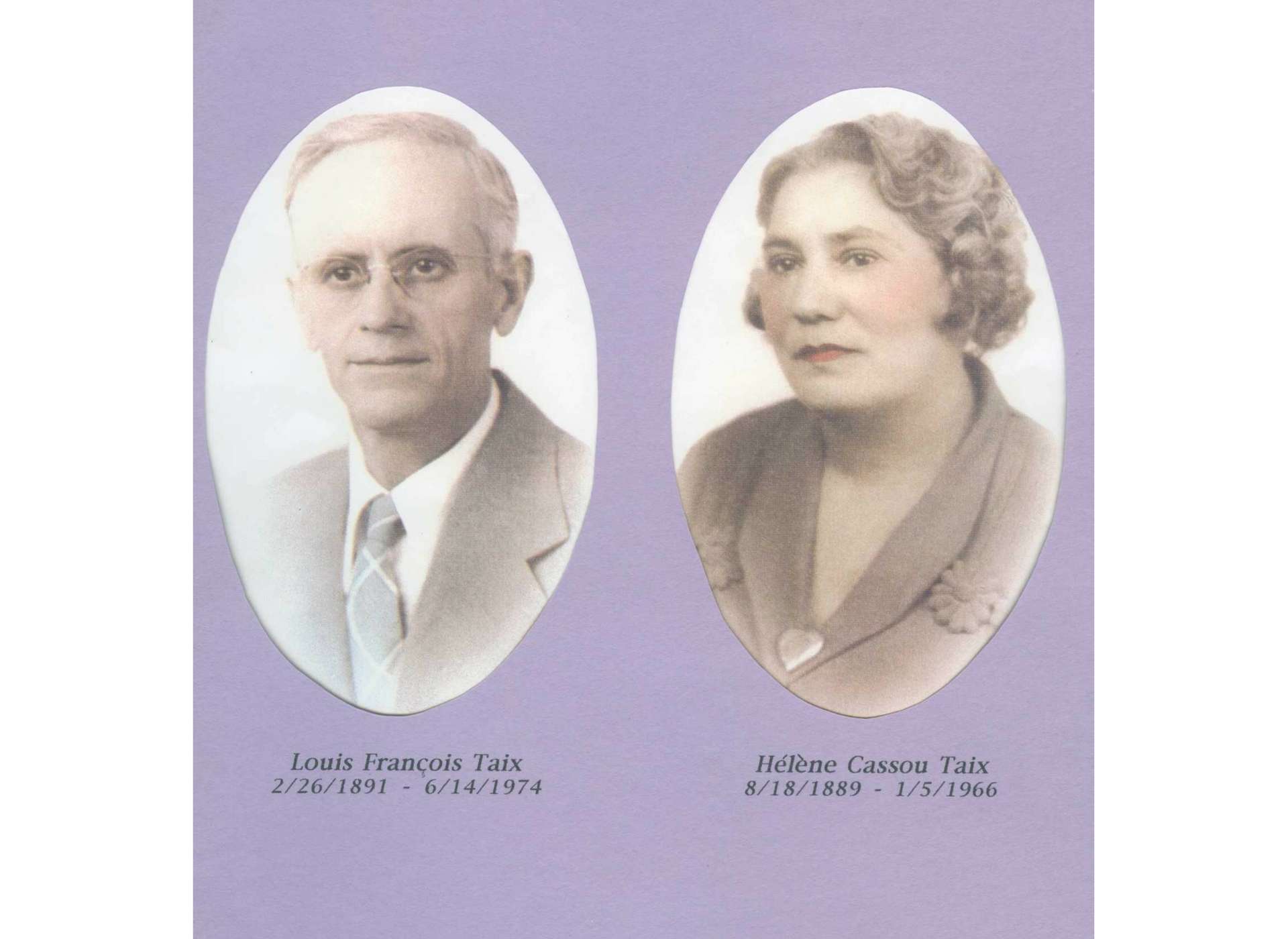Assistant Director for Curatorial Services Kimberly Guise remembers Lorraine Taix McCaslin, who passed away on August 29, 2017, at the age of 93:
Volunteers are a special part of our operation and the Museum family. Our volunteer force of more than 300 is made up of essential personnel without whom the Museum could not operate. Not only do they form the front line of visitor engagement, but every day they bring passion and energy to our institution. Often this stems from personal experiences during the war. That was certainly the case with Lorraine Taix McCaslin.
Lorraine began volunteering at the Museum before the Museum even opened, and contributed over 3,000 hours to the Museum as part of the “Mighty Mondays”—the Monday-morning volunteer crew. Lorraine’s kindness and enthusiasm were infectious. And she never ceased to surprise. Lorraine had an interesting personal history and varied interests, including a gold-medal win in the long jump at the Greater New Orleans Senior Olympics and an eighth-place showing in the National Senior Olympic Games. She was honored as a Peoples Health Champion (see top photo) at a New Orleans Saints game on December 28, 2003.
Lorraine’s early life and family history are imprinted on the Museum. Both Lorraine and her brother, George Taix, were longtime volunteers at the Museum. Their family, like that of 418,500 other American families, was forever changed by the war with the loss of one of their own.
Helene and Louis Taix, Lorraine’s parents, emigrated from France prior to World War I. Shortly thereafter, during World War I, Louis would go back to fight for France, taking his wife with him. Following the war, they returned to United States with their firstborn, Louis, and settled in New Orleans, where they expanded and raised their family.
Lorraine’s oldest brother, Louis Marcel Taix was a merchant seaman lost at sea when the SS Nicarao was sunk by German submarine U-751 on the night of May 15, 1942, in the Bahamas. He was 25 years old. Teenager Lorraine was lying on the sofa in her family’s living room, with the front door letting air in, when she saw a bicycle messenger approach. She knew right away it was terrible news about her brother. She called her mother and opened the telegram, which announced that her brother was missing at sea. Lorraine tried to console her mother. She thought perhaps there was some chance that her smart, Boy Scout older brother had managed to survive, that he might be alive, stranded on an island somewhere. Later, the family was visited by the ship’s captain, who told them, "[Lou] told one of the officers that he must go back into the radio shack and send another message for help . . . Louis managed to get into the radio room and sent the SOS." The captain stated that he saw the radio room collapse with Louis trapped inside.
The City of New Orleans honored Helene Taix with a brooch representing the “Order of the Golden Heart,” a local distinction, similar to the national Gold Star Mothers. According to her family, Helene would wear the heart pin on her aprons and housedresses until her death.
-

The story of John McDonogh High School's scrap-drive triumph.
-

Louis Marcel Taix.
-

George Taix.
-

After the sinking of the Nicarao, Lorraine accompanied her father to citizenship classes. He was motivated like never before to become a citizen of the nation for which his son lost his life. Eventually both of Taix’s parents would become American citizens.
Lorraine’s brother Lucien served in the Navy and was stationed in New Orleans. Their other brother and champion amateur boxer, George, enlisted in the US Navy on October 9, 1942. In January 1944, after an assignment in New Orleans boxing for the entertainment of his fellow servicemen, he was assigned as a boatswain’s mate aboard the refueling ship USS Moose (IX-124), which served in the Pacific.
The same month George enlisted, a New Orleans newspaper sponsored a school scrap-metal drive for the war effort, a significant event in Lorraine’s wartime experiences. The drive was a huge success, with many schoolchildren participating, competing against each other to gather the most scrap. Lorraine mentioned the drive to her father, who, as an automobile mechanic, had contacts in scrap yards. He was eager to help, considering the loss of son Louis and his two other sons’ service in the Navy. Lorraine’s father took her to some of his friends to search for scrap metal. Their first stop was his friend, Mr. Doyle, who had a service station/construction business with lots of large equipment. Lorraine remembered walking around Mr. Doyle’s place, where her father noticed a 10-ton steamroller that looked unusable. After much persuasion, they convinced Mr. Doyle to donate the steamroller to their scrap drive. Thanks to it, Lorraine’s school, John McDonogh High School received first place in collecting the largest single item.
Lorraine told this story with the same vigor and warmth she brought to every activity she pursued. She remembered fondly a visit to her cousins in France. During an evening out in a restaurant, a band started to play "When the Saints Go Marching In," and Lorraine danced on the table. She’s certainly “in that number.”
Lorraine will be remembered by her family’s representation in the Museum, made possible by her oral history interviews and artifact donations. The Taix family story is told in several places throughout the Museum: Louis Taix’s Dog Tag Experience story, Helene Taix’s Order of the Golden Heart pin, a silver platter given to the family by the crew of the USS Nicarao (on display in the Ralph E. Crump, LTJG, USNR, US Merchant Marine Gallery), and George Taix’s boxing trophy earned on Guadalcanal in 1944 (on display in the special exhibit The Pelican State Goes to War: Louisiana in World War II). Lorraine tells her story in her own words in her oral history, which is featured in The Pelican State Goes to War and also in The Arsenal of Democracy: The Herman and George Brown Salute to the Home Front.
In 1979, Lorraine lost her husband, Robert McCaslin, a WWII Coast Guard veteran, whom she married shortly after the war. She is survived by her two children, six grandchildren, and her family at The National WWII Museum.
Kim Guise
Kimberly Guise holds a BA in German and Judaic Studies from the University of Massachusetts Amherst. She also studied at the Universität Freiburg in Germany and holds a masters in Library and Information Science (MLIS) from Louisiana State University. Kim is fluent in German, reads Yiddish, and specializes in the American prisoner-of-war experience in World War II.





